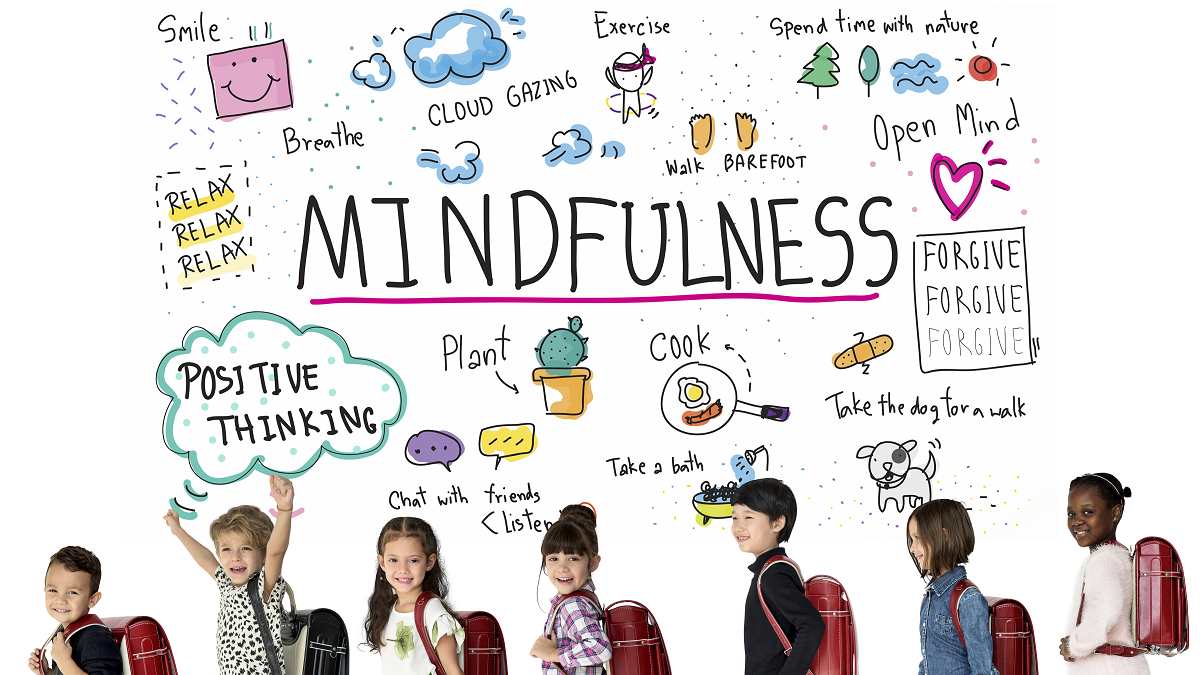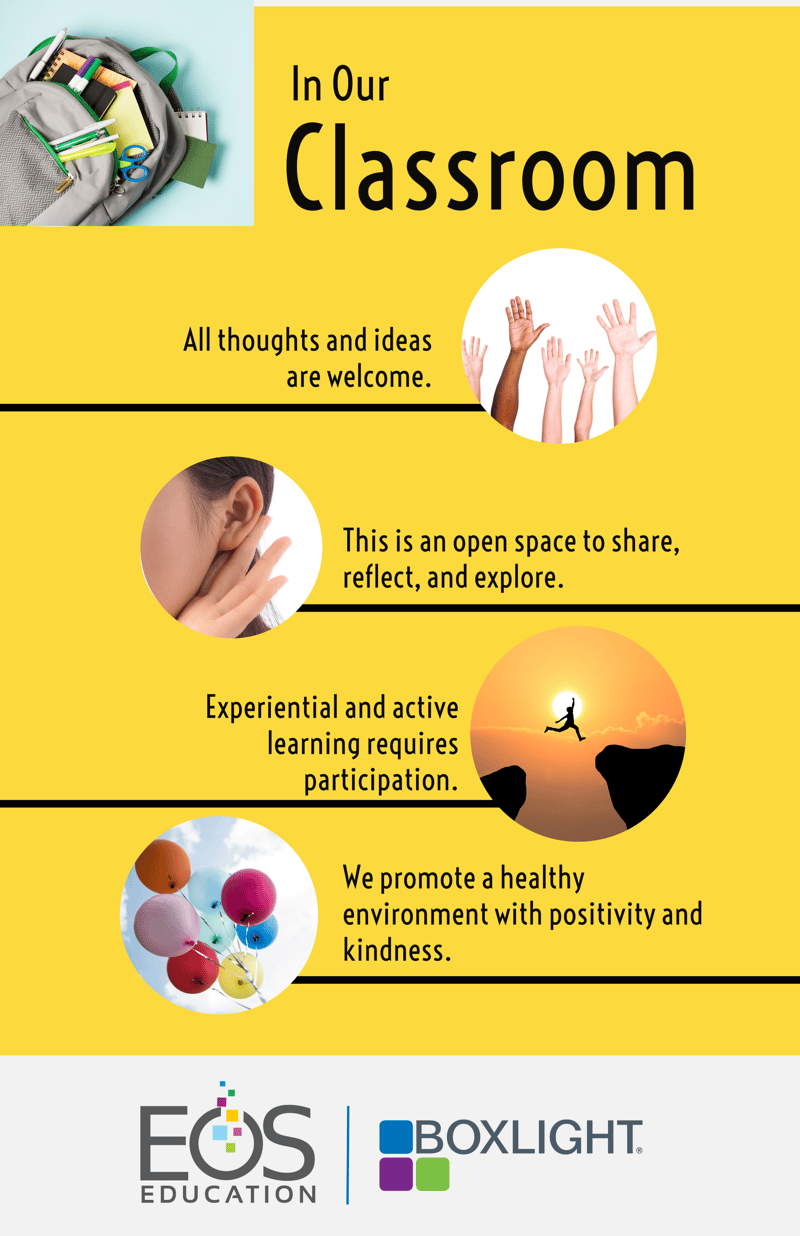
“Just one small thought in the morning can change your whole day.” - Dalai Lama
In our ever-evolving classroom environments, let’s take a pause, a breath, a moment to think about the culture we create in our classrooms at the start of each day. How can we cultivate mindfulness in our learning environments?
Mindfulness means maintaining a moment-by-moment awareness of our thoughts, feelings, bodily sensations, and the surrounding environment through a gentle lens.
Mindfulness also involves acceptance, meaning that we pay attention to our thoughts and feelings without judging them - without believing, for instance, that there’s a “right” or “wrong” way to think or feel in each moment.
When we practice mindfulness, our thoughts tune into what we’re sensing in the present moment rather than rehashing the past or imagining the future.
The key word is practice! To promote mindfulness, students and educators must have a clear understanding of what this means, what it looks like, and how it can be applied. It is most effective when we make this a part of our norm, open the opportunities to explore, and yes, practice together.
Mindfulness is a key component when introducing Self-Awareness and Self-Management SEL skills. To introduce Mindfulness let’s talk about how we can embed this into our classroom practices at the start of the day, the beginning moments of a class period, or even in our transitions. These moments can have a significant impact on helping students to arrive, to recognize in the present how they are feeling, and prepare their minds for the learning ahead.
3 Mindful Strategies
1. Create a classroom culture and practice together
Establishing relationships in the classroom is essential. Include students in developing the norms for your classroom culture. The act of intentionally building connections is in itself a mindful practice.
What do your students see and hear when they enter the classroom environment? This can look or sound like a simple greeting as students enter, a daily affirmation displayed, or your expectations posted for all to see.

As educators, we may not feel comfortable facilitating breathing exercises or leading mindful activities, which is fine. Start with the culture and expectations, then utilize the plethora of resources available to bring in those other areas of expertise to build authentic mindful moments in your classroom. Here are a few to get you started:
- Weekly Wellness Check
Use an interactive document or platform to share thoughts and ideas. Try your MimioPro 4 interactive display and CleverShare!
- How are you doing?
- Tell us about your day.
- Show off something you've made.
- Introduce your favorite pet.
- Share anything!
Classmates can show support by offering encouraging words, asking follow-up questions, or sharing their own experiences with each other.
- Visualization
Set your MimioPro 4 interactive display timer or a classroom timer for 2 minutes.
- Ask students to visualize a place they really enjoy. Provide guided questions to support students as they begin the visualization activity.
- What sounds or smells do you recognize?
- What is the environment you are in?
Following the visualization:
- Describe the feeling(s) you have when you are in this location.
- Take time to recognize your ability to visualize this place and tap into these feelings whenever you need to take a break, recenter, or refocus.
2. Build skills for Self-Awareness and Self-Management
Support students in building the skills to recognize their own feelings and emotions; focus attention on self-care and compassion. Start with an image or video as an exemplar for a mindful activity and ask students:
- What did you see?
- Do you have your own mindful routine?
- How can we practice this skill or technique together?
As SEL skills continue to develop and opportunities are provided to practice together in small moments in the classroom, we equip students with Self-Management skills. These skills allow students to regulate their own emotions and increase their ability to recognize positive means for coping, understanding, and managing actions and behaviors.
3. Embed and model experiences within classroom instruction
Take a moment to think about a student’s day at school. They are asked to move from one subject to another, one classroom to another - are we providing a space for students to transition from one idea or place to the next? To begin, identify simple actions to align with what you already do in the classroom.
- Start each class period with an affirmation or an opportunity to be present in the moment.
- Embed Mindful transitions into slides or presentations as visual cues.
- Add one five-minute block to breathe and refocus before moving on to another subject or topic.
- Schedule tasks for yourself to model and reflect on personal and classroom mindful practices.
- Be attentive and aware. It is perfectly acceptable to take a mindful break. Mindful reinforcement can also be spontaneous.
The simple truth is that if you are making an effort, there is no right or wrong. Our classroom and school environments are built together, and it takes time to integrate new concepts and practice habits. Integrate ideas that collectively you and your students have developed together, work with colleagues to share ideas and techniques, and embed mindfulness at your own pace. That is the point - to be mindful of the present and nurture ideas, thoughts, and feelings. Take a moment to simply notice your presence and you may find that it can change your entire day.
For more ideas on incorporating Social-Emotional Learning, read:
- Cultivating Empathy in the Classroom
- Technology to Support Social-Emotional Learning
- Building Relationship Skills to Support Social-Emotional Learning
- Supporting Social-Emotional Learning in Remote and Hybrid Classrooms
To learn from Social-Emotional Learning SME’s, watch the Social and Emotional Learning On-Demand Webinars. Click here to view: Social and Emotional Learning On-Demand Webinars

